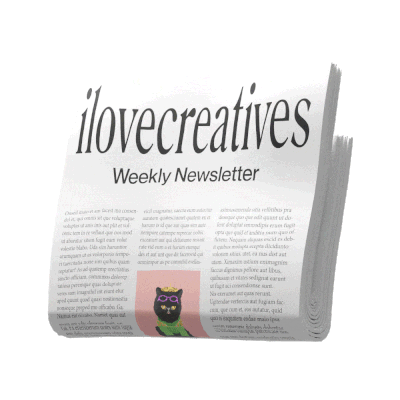Adapting Creative Processes Makes You Into a Stronger Creative and Collaborator
Adapting Creative Processes Makes You Into a Stronger Creative and Collaborator
by Cori Corrine
View Creative Profile
Hi! I’m Cori Corrine 👋 and I am obsessed with the idea of creative momentum. In the same euphoric sense of a runner’s high, creative momentum is its own euphoria. It ebbs and flows, but I found as I evolved my design process, my creative momentum both strengthened and stretched into a continuous flow.
The first time I experienced this was in my fourth year of design school. I chose to pursue an independent study rather than an internship. I worked with one of my best friends, Kaley, who at the time was a fashion design student. It was my first time both pursuing my own work, outside the confines of a syllabus, and working across creative disciplines. The creative freedom was both exhilarating and completely overwhelming. Up until that point my process was defined by my creative label as a designer and was contingent upon the steps laid out in a syllabus. The independent study was completely up to me to define. My friend was working towards her thesis collection as a senior and I decided to create a brand experience for the collection.
At first, I began the design process as I had in class:
➀ research ➁ hand sketches ➂ refine sketches ➃ bring sketches into the computer ➄ further refinements ➅ finalize ➆ start all over with the next item.
This could vary depending on the type of project, but the process would still fall into the same trajectory.
Observing other creative processes
I felt stuck and uninspired and watched as Kaley worked fluidly, without a step-by-step process. At times she’d be writing notes, collaging and sketching all within her notebook, to working on the garments. I realized her process was so personal and embedded in her work that she could flow from one thing to another without disruption.
She didn’t have a step-by-step guide, rather the process was the work itself. Her final collection was amazing, but the notebooks were what intrigued me. I decided to work alongside her, mimicking her process. I bound my own notebook and decided to visualize my research, collage my ideas, and ideate within the imperfections of the pages. The notebook became interactive, textural and a reflection of my transforming interests. At the end of the project, I was most proud of what I had done within the notebook. It’s what sparked my observation of other processes.
Applying your creative process to client work
I now have 7+ years of experience beyond that independent study, with a more expansive personal process. Yet it’s influenced me to this day.
With every new collaboration, my first step is understanding that person’s or studio’s creative process. It’s a reflection of them, it’s personal and like my own, it’s been influenced by others. The first time we have a video call it’s as simple as asking “what is your creative process?” If that seems too vague, I always look into their work to get a sense of who they are and their aesthetic. With that, you can ask, “what was your process on ‘title of project’?” This opens a much broader and deeper conversation.
Afterward, I’ll take them through work of my choosing, unless they ask to see a specific project, and I walk them through the first presentation I give to a client. The first is typically the most extensive, that way we can discuss how our process overlaps and have a better understanding of one another as creatives. As I continue to work with them I observe. I listen intently when they present their work, I look over their work in progress and I make sure to open up a dialogue to share work and give feedback. You’ll never grow as a creative person if you isolate yourself. I’ve worked as a remote freelance designer for 4+ years and I’ve come to learn that I have to work harder to communicate and connect to other people to make sure the work flourishes.
What you gain from observing other’s creative profiles.
Earlier this year I made the switch to designing websites in Figma versus Photoshop after working with a team that almost exclusively uses Figma. Years ago, I learned the importance of editing your imagery and creating mockups for a more in-depth look into how a logo can extend into a system for the first client presentation. The process is not just defined by the tools that you use, it can also be how you talk to a client.
Recently, I listened as a freelancer presented their work to the client, how they interacted and discussed the feedback and I realized I could improve how I articulate a creative idea to a client unfamiliar with design. I started analyzing my speech, noticing myself using the word ‘no’ far too often. Listening helped me to form a much more open-ended discussion versus a combative negation. Working with other studios, agencies or freelancers is always an opportunity to question your own process for the better.




